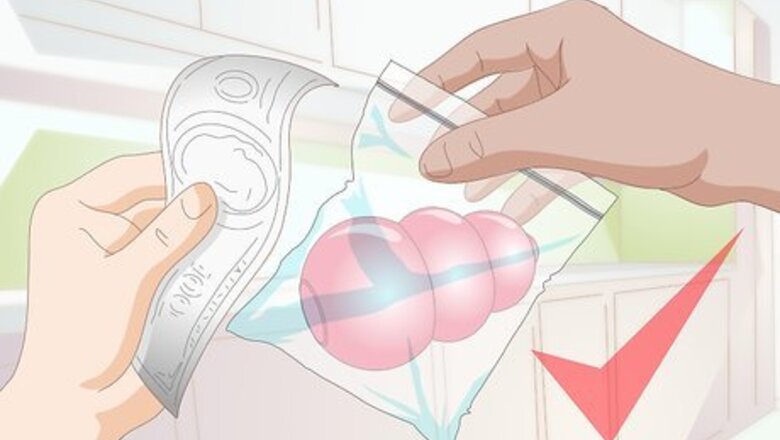
views
Using a Ball or Toy
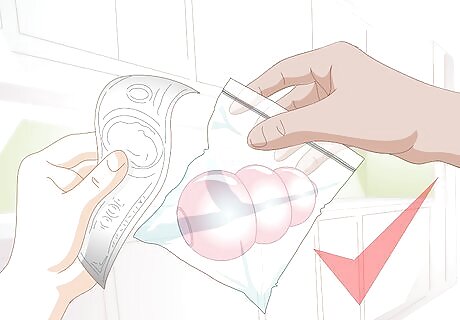
Buy a hard rubber ball or Kong toy. The canine teeth (long, curved teeth by the incisors) are commonly misaligned in dogs. If your dog's teeth are only mildly misaligned, a hard rubber ball or rubber chew toy (Kong toy) may be all that’s needed to correct the misalignment. Kong toys and balls are available at most pet shops and online. However, since there are so many options, talk to your vet about which option would be best for your dog. Choose a toy size that is appropriate for your dog’s size.

Let your dog play with the ball or toy. The rubber ball or toy will be most effective when your dog plays with it for at least 15 minutes, three times a day. To encourage your dog to play with the ball or toy, give it to your dog as a special treat for good behavior. You could also put some tasty treats in the Kong toy and use it as a food puzzle. It’s perfectly fine for your dog to play with the toy for more than 45 minutes a day. The longer your dog plays with the toy, the more likely the toy will correct the teeth alignment issues.
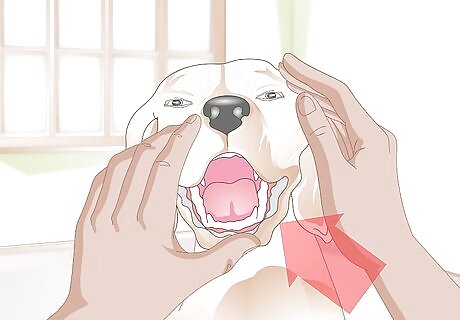
Check your dog’s teeth alignment. After your dog has had a week or two of playing with the ball or toy, look at your dog’s teeth. If you do not notice any improvements in the teeth alignment, you may need to consider other treatment options. Contact your vet to discuss these options. Consider taking a picture of your dog’s teeth before your dog starts playing with the hard rubber toy. Then, take another picture a week or two later. Compare the two pictures to determine if there’s been any improvement in teeth alignment.
Using an Orthodontic Device
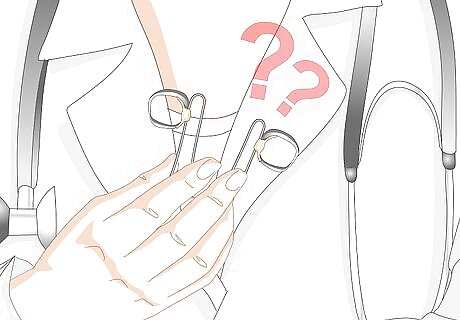
Talk to your vet about orthodontic devices. Your vet may recommend putting a device to put in your dog’s mouth to realign the abnormally positioned teeth. A popular orthodontic device for dogs is the inclined plane, also known as a bite plate. It is commonly recommended when the lower canine teeth point straight up into the mouth, rather than being angled slightly outward (‘base narrow canine teeth’). Vets recommend placing an inclined plate in a dog’s mouth between 7 and 9 months of age. It fits over a dog’s upper teeth and works by directing the lower canines into their proper positions.
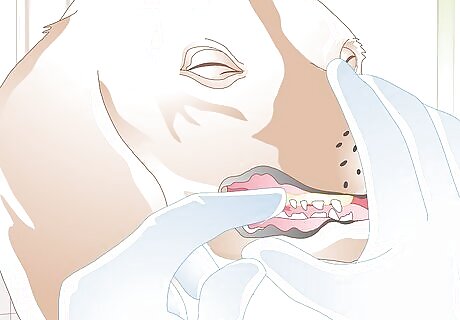
Allow your vet to make an inclined plane for your dog. Your vet will anesthetize your dog to make the acrylic composite (basic shape) of your dog’s upper teeth to make the inclined plane. They will clean the teeth first to make sure the composite is accurate. Your vet may make what’s called a telescoping inclined plane so it does not stop your dog’s jaw from growing.
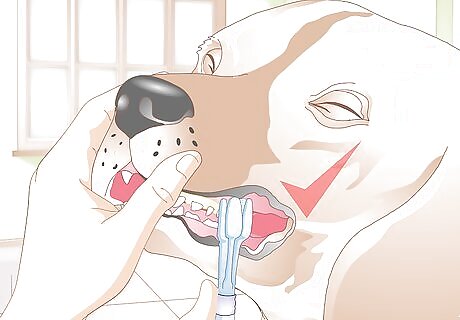
Keep the inclined plane clean. Just like human bite plates, canine inclined planes need to be kept clean. Your vet may recommend sedating or anesthetizing your dog to clean its inclined plane. If necessary, your vet will make adjustments to the inclined plane, since your dog could have dislodged it when biting down on something hard. If you regularly brush your dog’s teeth, it may be a little more challenging to do so with the inclined plane. Talk to your vet about how to brush your dog’s teeth while the inclined plane is in place.
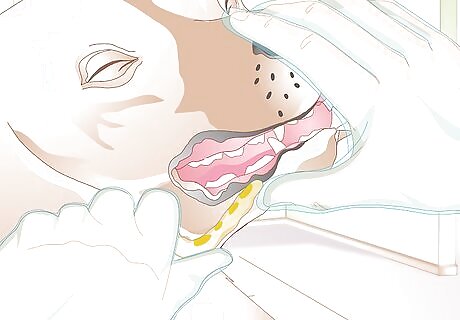
Let your vet remove the inclined plane. The inclined plane will not stay in your dog’s mouth throughout your dog’s life. Your vet will remove the inclined plane when your dog’s teeth are in proper alignment.
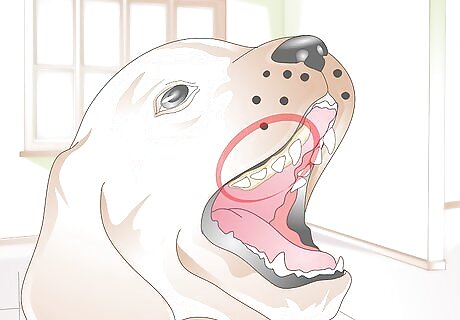
Use the inclined plane as a retainer. Once your dog’s teeth are properly aligned, the inclined plane could be used as a retainer for several months to maintain the proper alignment. Talk to your vet about this option.
Using Crown Reduction

Talk with your vet about crown reduction. The crown is the visible part of a tooth. Damage to crowns on the canine teeth can be painful and possibly damage the roof of the mouth. Crown reduction is useful for different types of malocclusion, such as base narrow canine teeth.
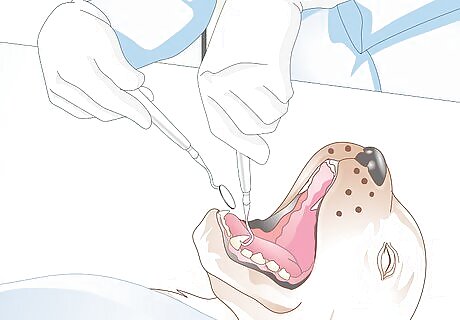
Have your vet perform crown reduction. Crown reduction is a surgical procedure. Your vet will remove a section of the crown. This will expose the pulp, the sensitive material inside the tooth. Your vet will remove some of this pulp and apply some medication to the remaining pulp to promote healing and prevent infection. Finally, your vet will cover the pulp with a protective barrier (like filling a human cavity). If your dog’s lower canine teeth are misaligned, your vet will remove enough of the crown so the teeth no longer touch the roof of your dog’s mouth. Removing some of the exposed pulp and applying the medication and protective barrier is called vital pulp therapy.
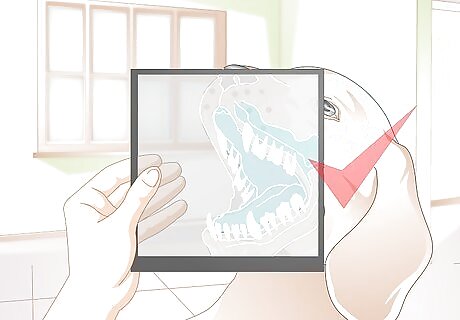
Get dental radiographs. About 6–9 months after the crown reduction and vital pulp therapy, your vet will want to take dental radiographs. This is because vital pulp therapy is not always successful. The dental radiographs will help your vet determine whether the entire procedure was successful. If the vital pulp therapy was not successful, your vet may need to perform the procedure again.











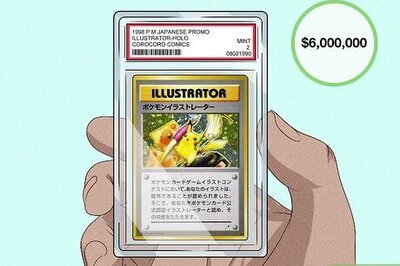
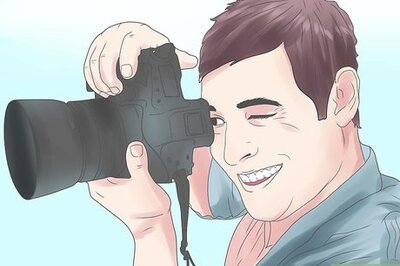






Comments
0 comment